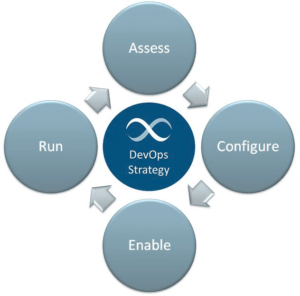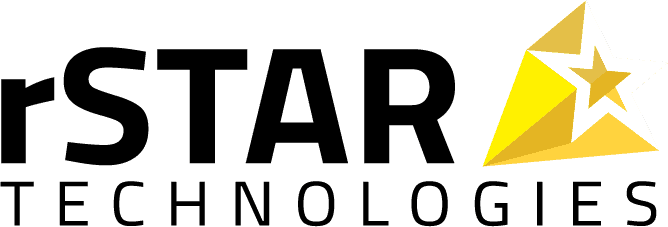What is DevOps?
DevOps is a software engineering approach that seeks to bring the development (Dev) and operations (Ops) teams together in positive, productive ways to maximize responsive design and smooth integration. The goal of DevOps is to establish a culture where updates and tweaks to user experience happen rapidly in a no-blame environment that prioritizes results and eliminates friction between the people writing code and those in customer-facing or IT roles who have to use and teach the software.
How Does DevOps Support Agile Development Methodology?
Agile Development is all about creating new features or code as soon as you know you need them and rolling them out in a reliable, user-ready way as quickly as possible. This process requires a tight, productive feedback loop between coders and operations/support professionals, who must work together to ensure quality performance, user experience, and consistency across a variety of devices and platforms.
Unfortunately, though, it is remarkably easy, given the stakes and nature of the work, for friction to develop between those two teams. Those in operations tend to have a “need for speed” because their service instincts tell them that issues need to be solved as quickly and directly as possible for the sake of the users. On the other hand, those on development side need to maintain a big-picture view that considers the overall unity of the experience and plans with an eye toward the future. DevOps is about ensuring both teams have a clear vision of the work, the tools they need to complete the work in a timely manner, and a framework that keeps collaboration positive while also prioritizing user experience.
Why Prioritize DevOps?
Too frequently, organizations concede that glitches, release delays, and instability are necessary evils along the way to building the perfect user experience. However, the fact of the matter is that the right DevOps strategy minimizes all those stumbling blocks while also providing an organized, data-driven process for correcting issues as they are identified. By providing a robust platform and a documented procedure for that dialogue, DevOps empowers companies to release their software with confidence that it has been thoroughly tested and that the correct supports are in place to handle any issues that arise upon release.
When companies prioritize DevOps, they reduce their time to market and streamline the process of creating updates, patches, and tweaks. That means real, impactful changes to the user experience can be delivered in days rather than months, preserving user confidence and protecting brand identity. Additionally, an organized, positive, ongoing dialogue between your development and operations team extends the lifecycle of each development round and considerably reduces the risk of major quality concerns ever occurring.
rSTAR DevOps Rapidstart:
For organizations looking to embrace an agile, comprehensive DevOps strategy, rSTAR offers Rapidstart, an automated toolkit that creates a Continuous Integration/Continuous Delivery pipeline using a four-step process. Although the initial adoption sprint looks a little different from ongoing operation after launch, the steps are exactly the same:
- Assess: The first step is to determine your organization’s DevOps needs. That includes evaluating your existing environment to figure out what’s already working and what needs to work better with an eye toward developing a roadmap that will optimize the journey for your team.
- Configure: rSTAR creates the DevOps toolkit that your
 organization needs to ensure the ball is never dropped between development and operations and any future issues can be addressed as quickly and efficiently as possible. Our team then pilots the system with your IT professionals to ensure everything works as desired.
organization needs to ensure the ball is never dropped between development and operations and any future issues can be addressed as quickly and efficiently as possible. Our team then pilots the system with your IT professionals to ensure everything works as desired.
- Enable: Once your solution has been configured, it’s time to build your designated DevOps team and prepare them for success. We provide 1-to-1 knowledge transfer to guarantee your leaders have the skills and understanding of the software needed to teach it forward to their peers and begin using the solution on a daily basis.
- Run: Now it’s time for the latest version of your software to go live in an environment where it’s being continually monitored for performance and proactive management.
After rollout, your DevOps team will work with our automated system to continue this cycle of assessment, solution configuration, training, and supported rollout. Once this cycle of development and integration has become an ingrained part of your organization’s culture, you’ll find your questions about what features need to be developed next or what aspects of the user experience need to be improved suddenly have data-driven answers and your team feels empowered to tackle challenges head-on.
How Will DevOps with rSTAR Make My Life Easier?
With traditional development and operations teams, IT leaders often find themselves relying on grassroots campaigns from one team or the other to drive the next round of development, improve performance, or fix issues with the user experience. rSTAR Rapidstart immediately transforms this model, purposefully designating time and space for discussions about updates, areas of need, and exciting new features while providing an agile toolkit that reduces time-to-market and increases reliability and consistency.
In addition to providing structure and process to DevOps without sacrificing responsiveness, rSTAR empowers clients to be more mindful about their development and operations strategies moving forward, providing a feedback loop of performance data and human communication that can inform strategic planning, long- and short-term goal setting, or honest assessment about the success of the current strategy. An organized DevOps strategy doesn’t just streamline your time-to-market, it allows your organization to think and develop more effectively than ever before.




